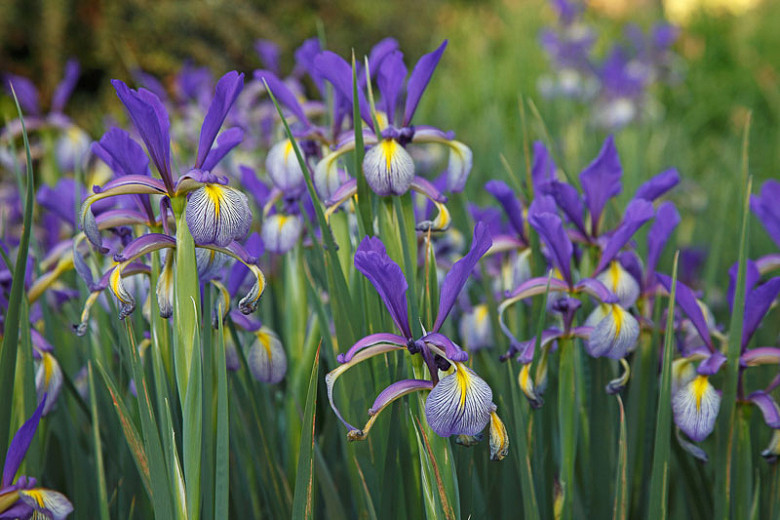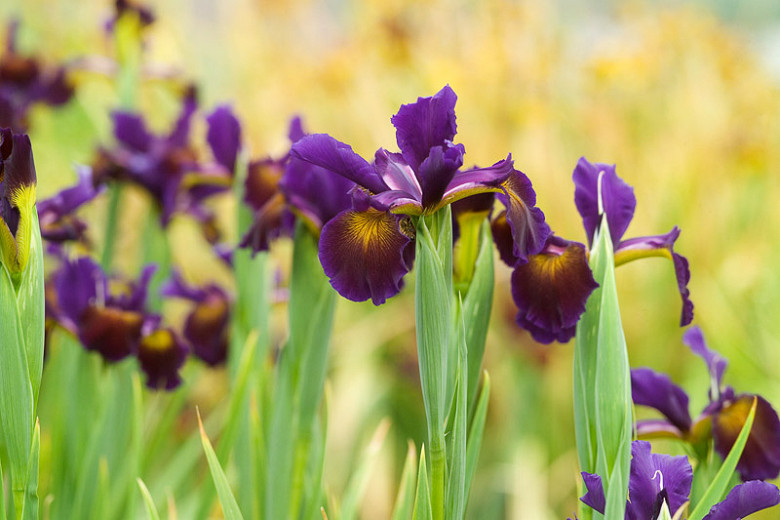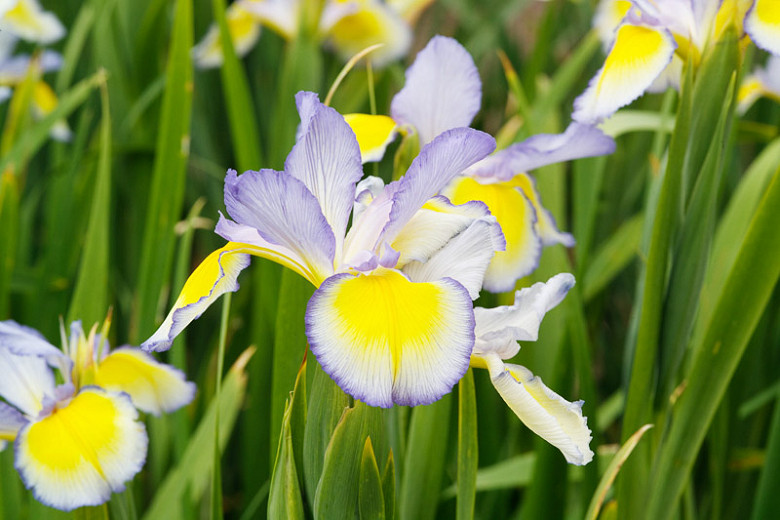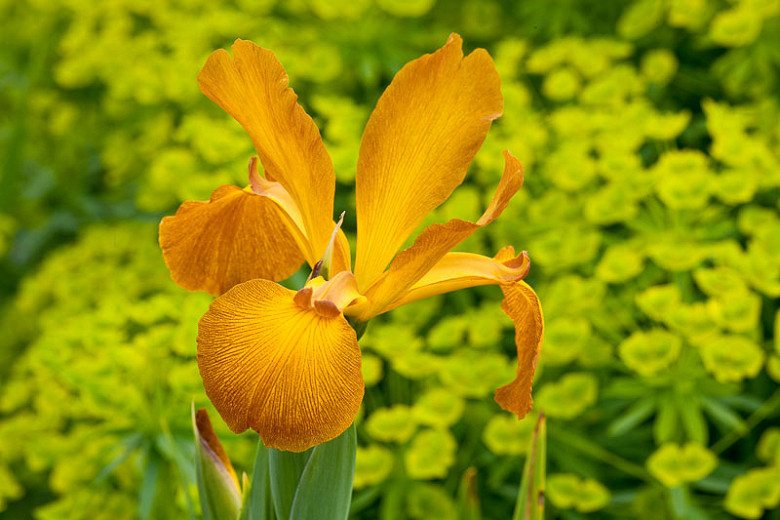Iris spuria (Blue Iris)
spuria irises are one of the tallest of irises, generally blooming 1 to 2 weeks after the Tall Bearded Irises. They are graceful perennials with elegant beardless flowers, with slim standards and falls
Native to Central and Southern Europe Europe, spuria irises are one of the tallest of irises, reaching a height of 3-5 ft or more (90-150 cm). Generally blooming 1 to 2 weeks after the Tall Bearded Irises, spuria irises are elegant rhizomatous perennials with attractive beardless flowers with slim standards and falls, up to 6 in. wide (15 cm). Graceful, the flowers exist in a wide range of colors, including bicolors, bitones and halos, and provide a striking display in late spring to early summer. Growing in clumps with handsome narrow linear leaves to 1 ft. long (30 cm), they add drama to the garden and will reward you with beautiful blooms and long-lasting cut flowers.
- Each flower stalk generally bears 3 to 4 buds on each branch. It should be noted that both height and bud counts may vary with regions: shorter stalks and reduced bud counts will be obtained in colder climates than in warm climate areas.
- spuria irises seem to set seed easily and will naturalize into large clumps.
- spuria irises attract bees and butterflies and are usually deer resistant.
- spuria irises perform best in full sun, in rich, humusy, medium moisture, neutral to slightly alkaline, well-drained soils. Partial shade is tolerated, especially in areas that have extremely high temperatures in the summer. However, both flowering performance and disease resistance may be altered. While consistent moisture should be provided during the growing season, wet soils are to be avoided to avoid rot issues. Less moisture is needed after blooming since most spurias are summer dormant (Do not water your spuria irises when dormant as this will cause rot). Once established, spurias are drought resistant. They are very heavy feeders, so make sure you fertilize them regularly prior to bloom.
- spuria irises make great focal points and are welcomed additions to beds, borders, wall-side borders, city gardens, coastal gardens, cottage gardens.
- spuria irises should be planted in mid to late summer, about 2 in. deep (5 cm) and 24-36 in. apart (60-90 cm). Space them far enough apart to grow in the same location for years as spuria irises resent being transplanted. They usually do not bloom the first year after planting. The second year should produce several bloom stalks.
- Deadhead spent flowers and remove any dying foliage in fall. Old flower stems can be cut down after blooming is over, not only for neatness, but to allow air to reach the rhizomes.
- Divide plants immediately after flowering when overcrowding occurs (every 3-4 years). Propagate by division of rhizomes from mid summer to early fall
- May be attacked by slugs, snails and thrips and be subject to gray molds, mustard seed fungus or crown rot.
- Tips to get your spuria irises to bloom: (1) Don't plant the rhizomes too deep, (2) Provide enough light, (3) Don't over-fertilize (4) Divide your plants when overcrowded.
- Ingestion may cause severe discomfort
Guide Information
| Hardiness | 3 – 9 |
|---|---|
| Heat Zones | 5 – 9 |
| Climate Zones | 2, 3, 4, 5, 6, 7, 8, 9, 10, 11, 12, 13, 14, 15, 16, 17, 18, 19, 20, 21, 22, 23, 24 |
| Plant Type | Perennials |
| Plant Family | Iris Spuria – Blue Irises |
| Exposure | Full Sun, Partial Sun |
| Season of Interest | SpringSummer |
| Height | 3' – 5' (90cm – 150cm) |
| Spread | 2' – 3' (60cm – 90cm) |
| Spacing | 24" – 36" (60cm – 90cm) |
| Water Needs | Average |
| Maintenance | Average |
| Soil Type | Clay, Loam, Sand |
| Soil pH | Alkaline, Neutral |
| Soil Drainage | Moist but Well-Drained, Well-Drained |
| Characteristics | Cut Flowers, Showy |
| Tolerance | Deer, Drought |
| Attracts | Bees, Butterflies |
| Landscaping Ideas | Beds and Borders, Wall-Side Borders |
| Garden Styles | City and Courtyard, Coastal Garden, Informal and Cottage |



